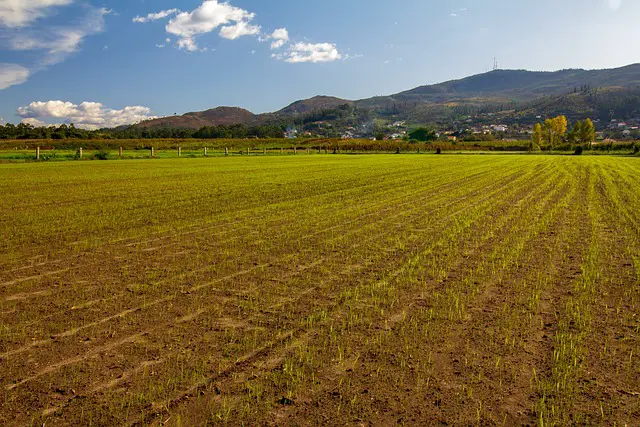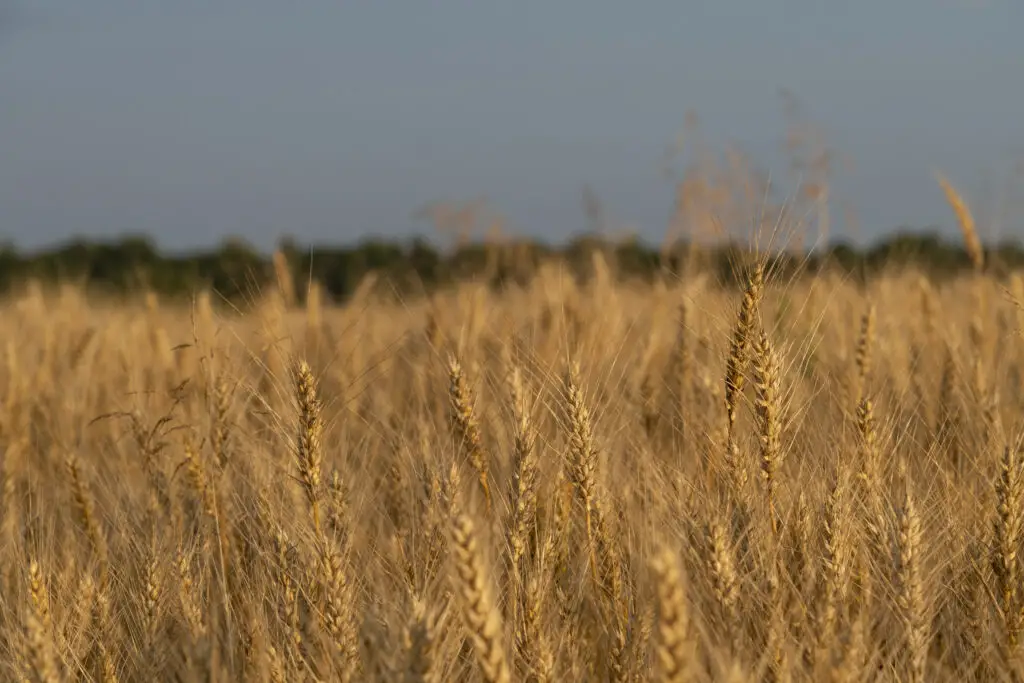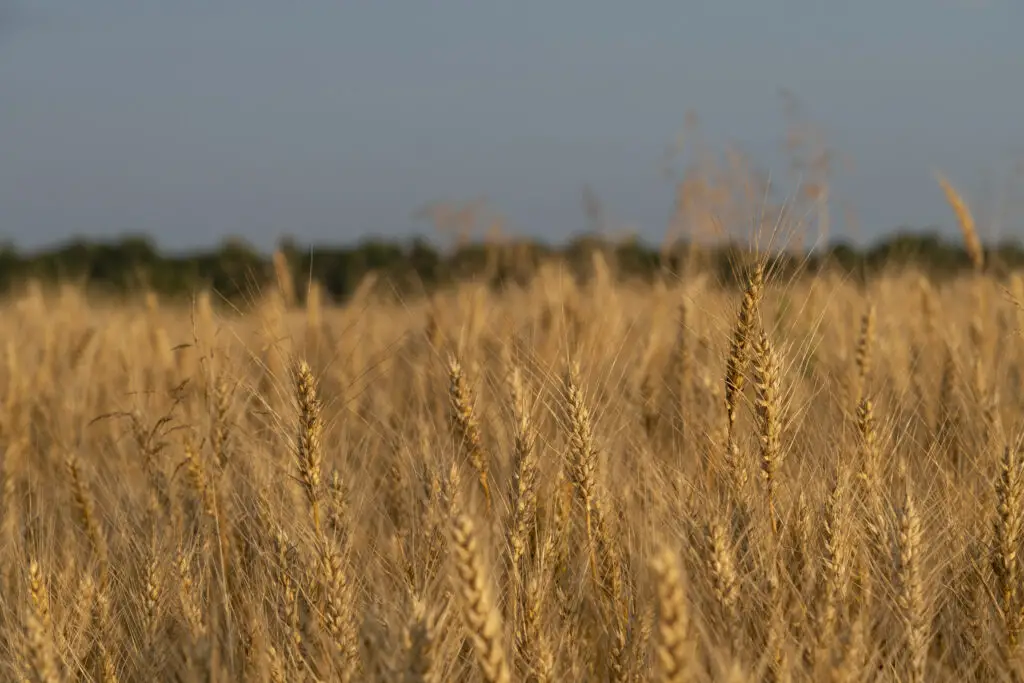Rye grass is a cool-season grass that is commonly grown in Florida, especially during the winter months. It is known for its lush greenery and ability to withstand heavy foot traffic, making it an excellent choice for sports fields and home lawns.
However, to ensure that the grass grows well and stays healthy, it is crucial to plant it at the right time. Understanding when to plant rye grass in Florida is essential for anyone looking to grow this grass variety.
Typically, the best time to plant rye grass in Florida is between October and February when temperatures are cooler. However, the exact planting time may vary depending on the region, weather conditions, and other factors. It is essential to know the ideal conditions for planting rye grass to ensure that it grows well and stays healthy.
Key Takeaways
- Rye grass is a cool-season grass commonly grown in Florida during the winter months.
- The best time to plant rye grass in Florida is between October and February, but this may vary depending on the region and weather conditions.
- Understanding the ideal conditions for planting rye grass is crucial to ensure that it grows well and stays healthy.
Don’t miss out on these other top posts:
- When to Plant Potatoes in Zone 7a?
- When to Plant Potatoes in Zone 5b?
- When to Plant Potatoes in Eastern North Carolina?
Understanding RyeGrass

Rye grass is a cool-season grass that is commonly grown in Florida for its fast establishment and high forage yield. It is a versatile grass that can be used for grazing, hay production, and erosion control. There are two main types of ryegrass: annual and perennial.
1. Annual RyeGrass
Annual ryegrass is a type of rye grass that completes its life cycle in one year. It is a popular choice for winter overseeding of warm-season grasses in Florida.
Annual rye grass is known for its quick establishment, high forage yield, and good palatability. It is best suited for short-term use, as it tends to decline in quality and yield after three to four months of growth.
2. Perennial RyeGrass
Perennial ryegrass is a type of rye grass that can persist for several years. It is a popular choice for cool-season pastures in Florida. Perennial rye grass is known for its high forage yield, good palatability, and ability to tolerate close grazing. It is best suited for long-term use, as it can persist for several years with proper management.
3. Lolium Multiflorum
Lolium multiflorum is the scientific name for rye grass. It is a member of the Poaceae family, which includes other important forage grasses such as Bermuda grass and Bahia grass. Rye grass is a fast-growing grass that can reach a height of 2 to 3 feet. It has a fine texture and a bright green color.
4. Cultivars
There are many cultivars of rye grass available in Florida, each with their own unique characteristics. Some cultivars are better suited for grazing, while others are better suited for hay production or erosion control. When selecting a cultivar, it is important to consider factors such as yield potential, disease resistance, and palatability.
When to Plant Rye Grass in Florida
Rye grass is a cool-season grass that thrives in cooler temperatures than its warm-season counterparts. The ideal time to plant rye grass in Florida is during the fall and winter months when temperatures are cooler and more conducive to its growth.
In southern coastal areas of Florida, where temperatures remain relatively warm throughout the year, rye grass can be planted during the cooler months of the year. This includes the months of October through February. In North Florida, rye grass can be planted in September and October.
When planting rye grass, it is important to consider the soil pH and soil fertility. Rye grass prefers a pH range between 6.0 and 7.0. A soil testing kit can be purchased from the local county extension office to check the soil pH.
If the soil is too acidic, lime can be added to raise the pH. If the soil is too alkaline, sulfur can be added to lower the pH.
Rye grass also prefers soil that is high in fertility. It is recommended to add fertilizer to the soil before planting to ensure optimal growth. A balanced fertilizer with an N-P-K ratio of 10-10-10 is ideal.
In addition to soil conditions, rye grass also requires ample sunlight to grow. It is important to plant rye grass in areas that receive at least 4-6 hours of direct sunlight per day. If planting in areas with shade, a shade-tolerant variety of rye grass should be used.
When to Plant Rye Grass

Rye grass is a cool-season grass that thrives in the cooler temperatures of fall and winter. In Florida, the optimal time to plant rye grass is during the fall season, between October and November. Planting during this time allows the grass to establish itself before the heat of summer arrives.
It is important to note that rye grass is not a perennial grass and will die off in the hot summer months. Therefore, it is recommended to plant rye grass as a winter annual.
Planting rye grass in the early spring months, such as May or August, is not recommended as the grass will struggle to establish itself in the hot and humid weather. Additionally, planting rye grass too early in the fall, such as in September, may result in the grass not having enough time to establish itself before the onset of winter.
In South Florida, the recommended time to seed rye grass is between November 1 and December 15. Annual ryegrass forage production peaks when daytime air temperatures are between 60 and 75 degrees. Dormancy occurs when temperatures rise above 90 degrees and below 50 degrees.
How to Plant Rye Grass
Planting rye grass in Florida requires careful planning and preparation. Here are some steps to follow to ensure successful planting:
1. Soil Preparation
Before planting, it is essential to prepare the soil properly. Rye grass prefers a soil pH range between 6.0 and 7.0. Therefore, it is recommended to test the soil to determine its pH level. If the soil is too acidic, adding lime can help raise the pH level. If the soil is too alkaline, adding sulfur can help lower the pH level.
2. Seeding
Seeding is the process of planting rye grass seeds in the soil. It is recommended to seed rye grass at least one month before the first frost, although two months or sixty days are ideal.
In Florida, the best time to plant rye grass is from November 1 to December 15. During this time, the daytime air temperature is between 60 and 75 degrees Fahrenheit, which is ideal for rye grass germination.
3. Germination
Germination is the process by which rye grass seeds sprout and begin to grow. To promote germination, it is essential to keep the soil moist. Water the soil regularly, but avoid overwatering, as this can cause the seeds to rot.
It is also important to keep the soil warm, as rye grass seeds germinate best at temperatures between 50 and 65 degrees Fahrenheit.
4. Establishment
Establishment is the process by which rye grass becomes fully established and begins to grow. It is recommended to use a seeder to spread the rye grass seeds evenly across the soil.
After seeding, it is essential to keep the soil moist and to avoid walking on the newly seeded area. This can damage the seeds and prevent them from germinating.
5. Overseeding
Overseeding is the process of planting rye grass seeds over an existing lawn. This can help improve the lawn’s appearance and health. It is recommended to overseed in the fall, as this is the best time for ryegrass germination. Before overseeding, it is essential to mow the lawn short and remove any debris.
Maintaining Rye Grass

Once the rye grass has been planted, proper maintenance is essential for it to grow and flourish. Here are some tips on how to maintain your ryegrass in Florida:
1. Watering
Watering is crucial for the growth of ryegrass. It is recommended to water the grass deeply and infrequently, rather than frequently and shallowly. This will encourage the roots to grow deeper, making the grass more drought-tolerant. Watering should be done early in the morning to avoid evaporation during the day.
2. Fertilizing
Fertilizing is essential for the growth and health of rye grass. It is recommended to fertilize the grass every 4-6 weeks during the growing season. A balanced fertilizer with a 3-1-2 ratio of nitrogen, phosphorus, and potassium is ideal for rye grass. Be careful not to over-fertilize, as this can lead to excessive growth and potential weed problems.
3. Mowing
Mowing is necessary to maintain the height of the rye grass. It is recommended to mow the grass to a height of 2-3 inches. Mowing should be done regularly, but not too frequently, to avoid stressing the grass. Be sure to keep the mower blades sharp to avoid damaging the grass.
4. Overseeding
Overseeding is the process of planting new grass seed over an existing lawn. It is recommended to overseed rye grass in the fall when the temperatures start to cool down.
This will allow the grass to establish before the winter months. Overseeding can help fill in thin or bare spots in the lawn and improve the overall appearance of the grass.
5. Weed Control
Weed control is essential for maintaining a healthy rye grass lawn. It is recommended to use a pre-emergent herbicide in the fall to prevent the growth of weeds. If weeds do appear, they should be removed manually or with a post-emergent herbicide. Be sure to read and follow the instructions carefully to avoid damaging the rye grass.
Rye Grass and Other Grasses
When it comes to planting grass in Florida, there are many options to choose from. Rye grass is a popular choice for those looking for a cool-season grass that can thrive in the winter months. However, it is important to note that rye grass is an annual grass, meaning it will only last for one season.
For those looking for a perennial grass option, warm-season grasses such as St. Augustine grass and Bermuda grass are good choices. These grasses are well-suited for the hot and humid climate of Florida and can withstand drought conditions.
Kentucky bluegrass and tall fescue are two other popular grass options that can be grown in Florida. However, they are better suited for cooler climates and may struggle in the heat and humidity of Florida.
It is important to consider the specific needs of each type of grass before deciding which one to plant. Factors such as soil type, sun exposure, and water requirements should all be taken into account.
In terms of planting times, rye grass should be planted in the fall months, typically between October and November. This allows the grass to establish itself before the winter months.
Warm-season grasses such as St. Augustine grass and Bermuda grass should be planted in the spring or summer months when temperatures are warmer.
Rye Grass in Different Regions

Rye grass is a cool-season grass that is commonly planted in Florida and other regions with mild winters. The best time to plant rye grass in Florida varies depending on the region. In the southern United States, including Florida, rye grass is typically planted in the fall and winter months.
In the Northeast region of the United States, rye grass is typically planted in the late summer or early fall. This allows the grass to establish itself before the winter months. In the Northwest region, rye grass is typically planted in the fall and winter months, similar to Florida.
In Arizona, rye grass is planted in the winter months, as the summers are too hot for the grass to grow. In Asia, rye grass is typically planted in the fall and winter months, similar to the southern United States.
It is important to note that the planting time for rye grass may vary depending on the specific region and climate. It is recommended to consult with a local expert or agricultural extension office for specific planting recommendations.
Uses of Rye Grass
Rye grass is a versatile cool-season grass that is widely used in Florida for various purposes. Here are some common uses of rye grass:
1. Forage Production
Rye grass is a popular forage crop in Florida due to its high yield potential and good nutritional quality. It is typically planted in the fall and used for grazing or hay production during the winter and early spring months. Rye grass is a good source of protein and can help meet the nutritional needs of livestock.
2. Cover Crop
Rye grass is often used as a cover crop to protect the soil from erosion and improve soil health. It can be planted in the fall after harvest and allowed to grow throughout the winter months. In the spring, the rye grass can be terminated and left to decompose, returning valuable nutrients to the soil.
3. Lawn and Greenery
Rye grass is a popular choice for home lawns in Florida because of its deep green color and drought tolerance. It is relatively easy to take care of and can withstand foot traffic, making it a good choice for sports fields as well.
4. Silage Production
Rye grass can also be used for silage production, which is a method of preserving forage by fermentation. Silage is a valuable feed source for livestock and can help farmers reduce feed costs.
Issues with Rye Grass

Rye grass is a cool-season grass that is commonly grown in Florida during the winter months. While it is a popular choice for overseeding lawns and pastures, there are some issues that growers should be aware of.
1. Disease
One of the main issues with rye grass is its susceptibility to disease. Common diseases that affect rye grass include gray leaf spot, Pythium blight, and brown patch. These diseases can cause significant damage to rye grass, and if left untreated, can result in complete loss of the crop.
2. Thatch
Another issue with rye grass is that it can produce a significant amount of thatch. Thatch is a layer of dead plant material that accumulates on the soil surface. If the thatch layer becomes too thick, it can prevent water and nutrients from reaching the roots of the grass. This can lead to poor growth and an increased risk of disease.
3. Erosion
Rye grass is also susceptible to erosion. This is especially true in areas with heavy rainfall or sloping terrain. If the soil is not properly prepared and maintained, erosion can occur, which can lead to the loss of soil and nutrients.
4. Dormant
Rye grass is a cool-season grass, which means that it will go dormant during the summer months. This can be a problem for those who are looking for year-round greenery. During the summer, rye grass will turn brown and become dormant, which can be unsightly.
5. Snow
While it is not a common issue in Florida, rye grass is susceptible to damage from snow and ice. If there is a heavy snowfall, the weight of the snow can cause the grass to bend or break. Additionally, if the snow melts quickly, it can cause flooding, which can damage the grass and soil.
Frequently Asked Questions
What is the best month to plant rye grass in Florida?
The best time to plant rye grass in Florida is during the fall months, between October and November. This is because the temperatures are cooler and there is more moisture in the air. Planting at this time will give the grass enough time to establish before the hot summer months.
When to plant perennial ryegrass in Texas?
The ideal time to plant perennial ryegrass in Texas is in the fall, between September and October. This will give the grass enough time to establish before the winter months arrive. Planting in the spring is not recommended as the temperatures can get too hot, and the grass may not survive.
How to plant rye grass seed?
To plant rye grass seed, prepare the soil by removing any debris and weeds. Then, spread the seed evenly across the soil and lightly rake it in. Water the area thoroughly and keep the soil moist until the grass has established.
What is the best rye seed for Florida?
There are several types of rye grass seed that are suitable for Florida, including annual ryegrass and perennial ryegrass. However, the best seed will depend on the specific needs of your lawn and the climate in your area.
It is recommended to consult with a local gardening expert to determine the best seed for your lawn.
Can you plant rye grass in March?
While it is possible to plant rye grass in March, it is not recommended as the temperatures are starting to warm up and the grass may not establish well. It is best to plant rye grass in the fall months for optimal growth.
How do you plant winter rye grass in Florida?
To plant winter rye grass in Florida, prepare the soil by removing any debris and weeds. Then, spread the seed evenly across the soil and lightly rake it in. Water the area thoroughly and keep the soil moist until the grass has established. It is important to plant winter rye grass in the fall months for optimal growth.

Hey, I’m Lisa and I’ve been an avid gardener for over 30 years. I love writing, talking and living in the garden! Feel free to connect with me on my socials below


